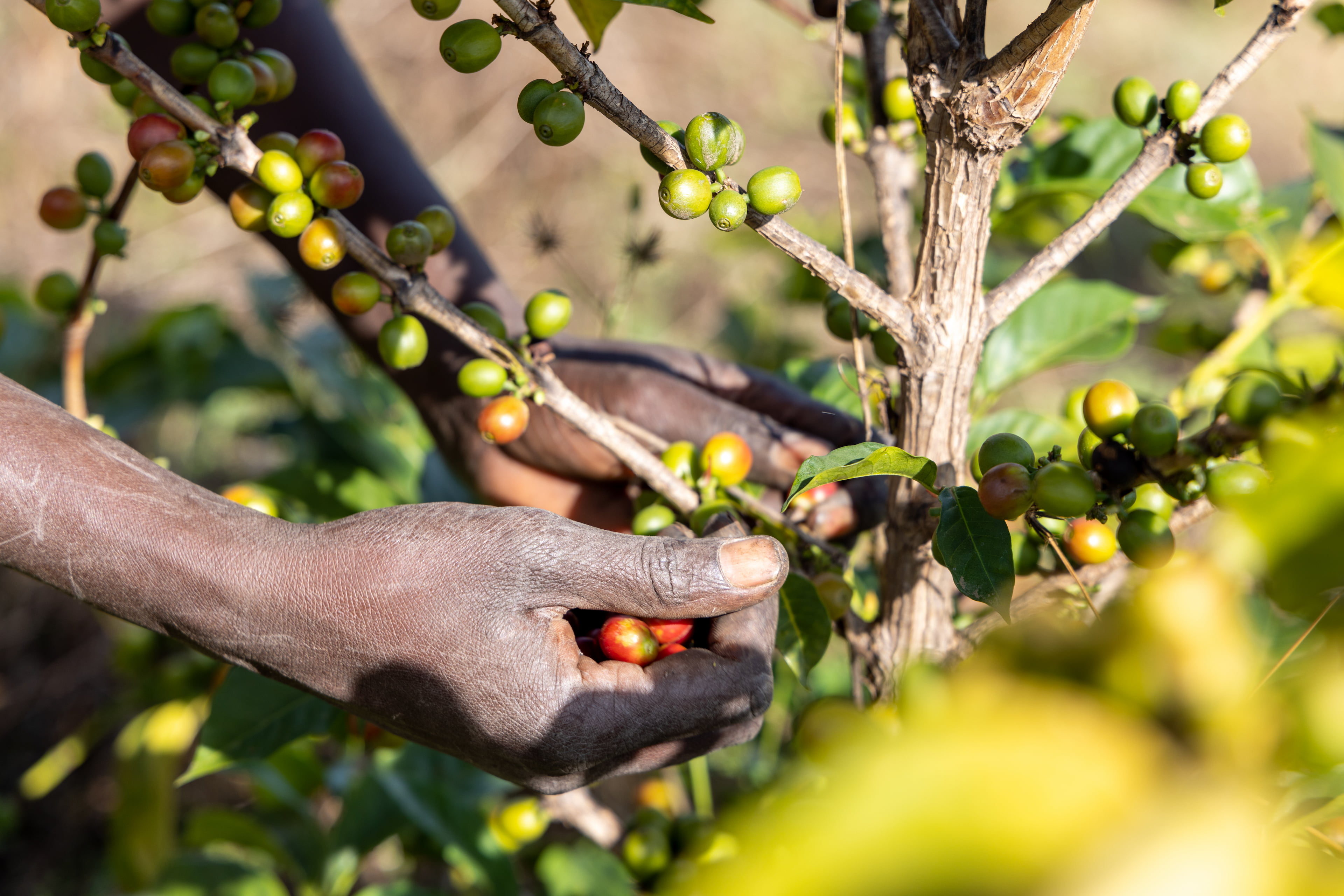Making a Positive Impact With Bio-solutions
Daan Vreeburg is a business advisor at Agriterra in Kenya. Together with partners, Agriterra is working on developing a low-carbon coffee chain. "So far, nothing but enthusiasm about the project: 3 years ago, we were dreaming about how amazing it would be to produce bio-compost and bio-fertilisers on a large scale. And now we are doing it!" Daan tells us more about Agriterra's project.

How did Agriterra develop a low-carbon coffee chain?
"Looking at coffee production, 40% of the CO2 emissions can be traced back to synthetic fertilisers emitting 40% of CO2. Coffee berries produce the other 40%. After the coffee beans are separated from the berry, the berry is left to rot in water. This causes more CO2 emissions. The remaining 20% of the emissions are released in the coffee bean roasting, packaging and shipping processes.
We focus on the first 80%; fertilising and coffee berries. Agriterra advises coffee cooperations on how to use and produce bio-fertiliser solutions, compost and pesticides. We ensure that the berries do not end up as residual waste but are used as compost."
What problems did you have selecting cooperations?
"At first, we thought there would be no problem finding them because we had such a good offer. However, the coffee industry in Kenya is subject to background processes of wheeling and dealing by bigger coffee companies. For the past 10 years, marketers mainly earned money by selling synthetic fertilisers to coffee cooperations. The marketers sold coffee from the cooperation for a percentage of the profit while at the same time offering synthetic fertilisers on credit with high-interest rates.
When we brought our project to the market proposing an alternative to these synthetic fertilisers, the marketers became nervous. Especially at the start of our project, we had to put a lot of hard work into finding coffee cooperations brave enough to work with us. In the end, we found some. We evaluated these cooperations on management, financial health and climate. By doing this, we ensured the cooperations were relatively stable and had an ambitious management structure. At the moment, we work together with 7 coffee cooperations."

What were the biggest challenges so far?
"Working with local partners continues to be a challenge. For example, we were about to work together with a local research centre. They would share strategies for combined cropping with us. When they finally got involved in the project, there was nothing new they could share with us. This caused a significant delay in our project."
What have been the biggest successes?
"We established a working business model. A nice example: 2 years ago, we stopped working with a cooperation that did not want to give any insight into their profits from bio-compost and bio-fertilisers, something we financially contributed to. Recently, we visited them and noticed their continuous production of bio-compost in response to increasing demand. This shows that even without our interference, it is a well-functioning revenue model because they now produce independently without our support. Another example is our Demo Farm. This is a regenerative coffee plantation where we grow coffee and other crops. The farm is now CO2-negative because the trees around the farm store CO2. With the Demo Farm, we want to show that our way of producing coffee generates more income than just growing one crop."
Can you express the project's accomplishments in numbers?
"The complexity of the project makes this difficult. Coffee yield is hard to measure because it depends on factors like the climate and coffee cycle. For example, Brazil's failed coffee harvest is causing very high prices right now. The war in Ukraine also has its effects on the coffee industry. The prices of raw materials used for synthetic fertilisers have become 6 times more expensive than before the war, whereas our prices have remained more or less the same. This has made bio-fertilisers the economical option."

How do you hope to inspire others?
"I hope people will consider not only the financial profitability of a project but also the positive impact that bio-solutions offer. This will provide more in the long run."
SDG Partnership facility
The SDG Partnership facility (SDGP) helps to achieve the following sustainable development goals in developing countries:
- SDG 2: ending hunger
- SDG 8: decent jobs and economic growth
- SDG 17: partnerships for the goals.
To reach these goals, it is necessary to work together. That is why SDGP works with public-private partnerships (PPPs) between government, businesses, NGOs and knowledge centres. Find out more about SDGP. For more about this project, visit our Development Cooperation Project Database.
- Ministry of Foreign Affairs